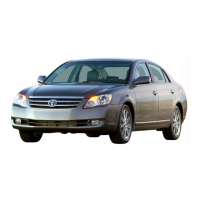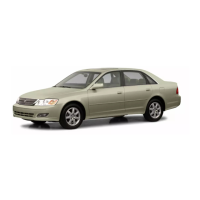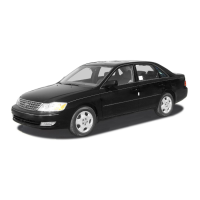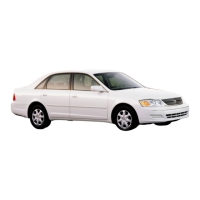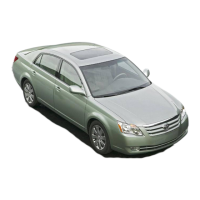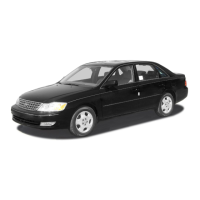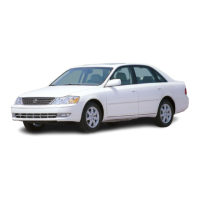’05 AVALON_U (L/O 0501)
79
2005 AVALON from Jan. ’05 Prod. (OM41408U)
In response to a severe frontal impact,
the SRS front airbags work together with
the seat belts to help reduce injury by
inflating. The SRS front airbags help re-
duce injuries mainly to the driver’s or front
passenger’s head, chest or knee caused
by hitting the vehicle interior.
The SRS front passenger airbag will not
activate if there is no passenger sitting in
the front passenger seat. However, the
front passenger airbag may deploy if lug-
gage is put in the seat, or the seat belt
is buckled up, regardless of the presence
of an occupant in the seat. (As for the
front passenger occupant classification
system, see “—Front passenger occupant
classification system” on page 93 in this
Section.)
Always wear your seat belt properly.
CAUTION
The SRS front airbag system is de-
signed only as a supplement to the
primary protection of the driver and
front passenger seat belt systems.
The driver and front passenger can
be killed or seriously injured by the
inflating airbags if they do not wear
the available seat belts properly.
During sudden braking just before
a collision, an unrestrained driver
or front passenger can move for-
ward into direct contact with or
close proximity to the airbag which
may then deploy during the colli-
sion. To ensure maximum protection
in an accident, the driver and all
passengers in the vehicle must
wear their seat belts properly. Wear-
ing a seat belt properly during an
accident reduces the chances of
death or serious injury or being
thrown out of the vehicle. For
instructions and precautions con-
cerning the seat belt system, see
“Seat belts” on page 67 in this Sec-
tion.
Improperly seated and/or restrained
infants and children can be killed
or seriously injured by the deploy-
ing front airbags. An infant or child
who is too small to use a seat belt
should be properly secured using a
child restraint system. Toyota
strongly recommends that all in-
fants and children be placed in the
rear seat of the vehicle and proper-
ly restrained. The rear seat is the
safest for infants and children. For
instructions concerning the installa-
tion of a child restraint system, see
“Child restraint” on page 98 in this
Section.
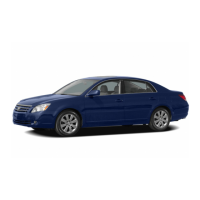
